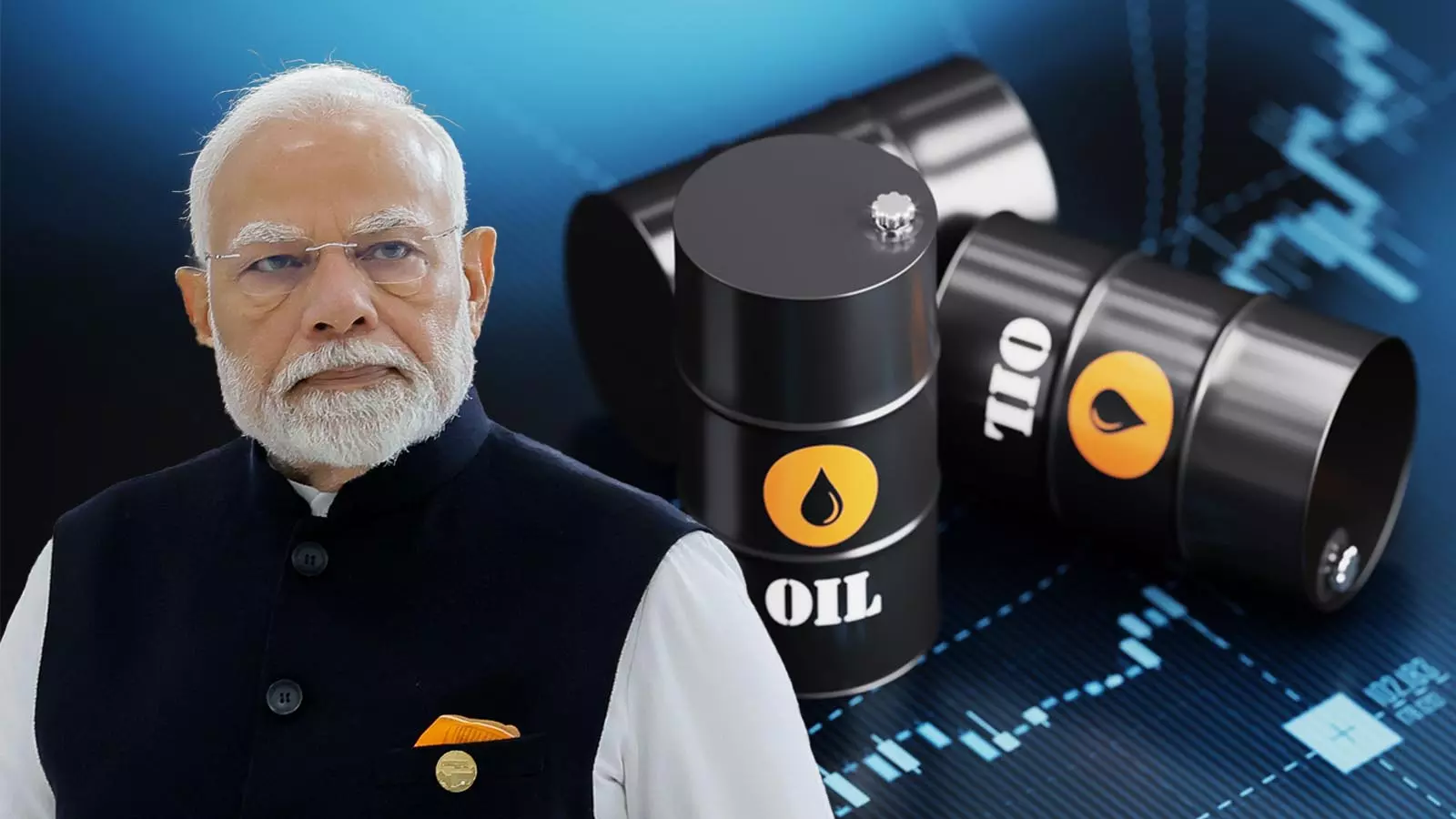
In 2015, Prime Minister Narendra Modi had promised to bring the dependence in imported crude down to 67 per cent by 2022 — from 77 in FY14. When it went up to 87.6 per cent in 2021, he blamed the previous governments.
Crude story: Skyrocketing import dependence, nosediving swadeshi output
While Russian oil imports have fallen from a peak of 44 pc to 35 pc, the real worry for India is soaring import reliance, a figure PM Modi pledged to significantly slash by 2022

Many in India are worried that the US sanctions on Russian oil companies will impact the country's oil security. This isn’t true at all because India’s import of Russian crude was just 0.2 per cent of its total imports before the Russia-Ukraine war broke out in February 2022.
The share of Russian crude went up because it was heavily discounted. It peaked at 44 per cent in June 2025 and in the first fortnight of October 2025, it was 35 per cent — as per global real-time information and analytics provider Kpler’s data.
India can live without Russian crude
So, India can live without Russian crude. Ordinary Indians wouldn’t even know it, because they had no stake in it; retail fuel prices remain unchanged. It brought windfall gains to oil refiners, particularly the private ones.
Also read: Testing time for India's foreign policy: Can Modi govt rise to the challenge?
In August this year, Financial Times wrote: “Indian refiners had gained $16 billion in extra profit from importing discounted Russian oil, with almost $6 billion (or over Rs 50,000 crore) of that going to Reliance Industries.”
What the Indian government and people should worry about is: Domestic crude production is rapidly going down and its import dependence has reached an alarming level of 90 per cent.
Also read: Have India's Russian crude imports endured amid Trump tariff tantrums?
In 2015, Prime Minister Narendra Modi had promised to bring this dependence down to 67 per cent by 2022 — from 77 in FY14. When it went up to 87.6 per cent in 2021, he blamed the previous governments for not paying attention to domestic crude production. Now it is for him to take the responsibility.
Also read: All eyes on Strait of Hormuz, but India needs to watch its oil vulnerability
The following three graphs capture how the Centre lost its grip on the situation long ago.
Swadeshi crude on a free fall
Then and now: Output growth in crude, refinery products and natural gas
This graph provides a comparative picture of average growth in the output of crude, refiner products and natural gas during FY06-FY13 (2004-05 series) and FY13-FY25 (2011-12 series).
Clearly, the previous United Progressive Alliance government did a far better job than the current National Democratic Alliance government.

